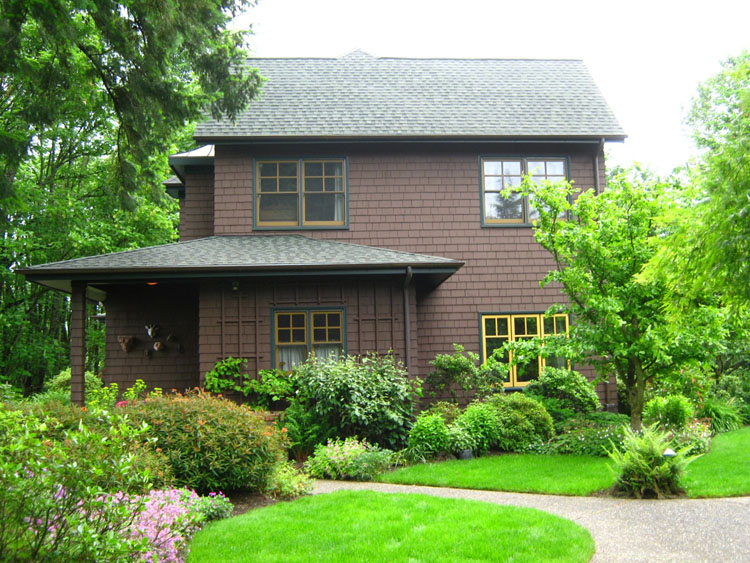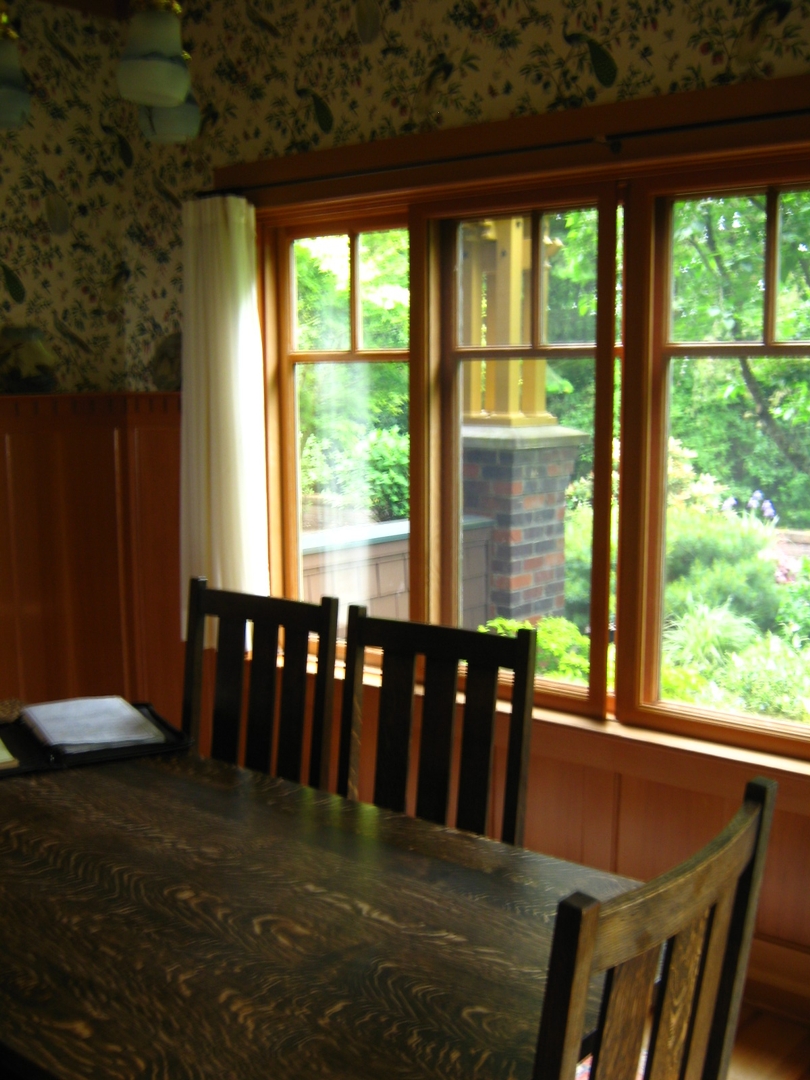|

An eloquently restored and remodeled home up off of Skyline Road (Thompson Rd).
|

No money was spared to have replica fir wood casement windows manufactured by a local sash shop. As many people know…
|

…casement sash typically swing out to the exterior like an outswing door. Like many modern wood windows, these sash were designed to incorporate…
|

…true-divided, insulated glass. Unlike many modern wood windows, these windows have no cladding on the exterior and minimal weatherstripping on the jambs only.
|

The problem? Location, location, location. The skyline areas infamous, brutally extreme wind-driven weather skirting across the skyline of the Portland’s west hills.
|

If there’s a nook or a cranny to be found in any kind of structure up here, you know that the wind driven weather is going to find it. Behold, one of the consequences of clear-coating the interior side of these windows.
|

Painted window & doors are subject to moistures adverse effects as well, but less so. Note, like outswing doors, the reveal (space) between the sash & the jambs are exposed to the exterior. So the wind-driven-rain is jet-streamed into those spaces, allowing…
|

…the moisture to test every seam created by where the varying sash components connect and wicking itself up under the clear-coat finish via the wood-grain which is designed to wick moisture. Upon being asked…almost begged to help find a…
|

…solution, we clad the lower-sides and bottoms of the most vulnerable sash with a light-gauge aluminum sheet-metal with an adhesive. For the record, it should be stated that we also are called upon to repair and replace hundreds of the latest…
|